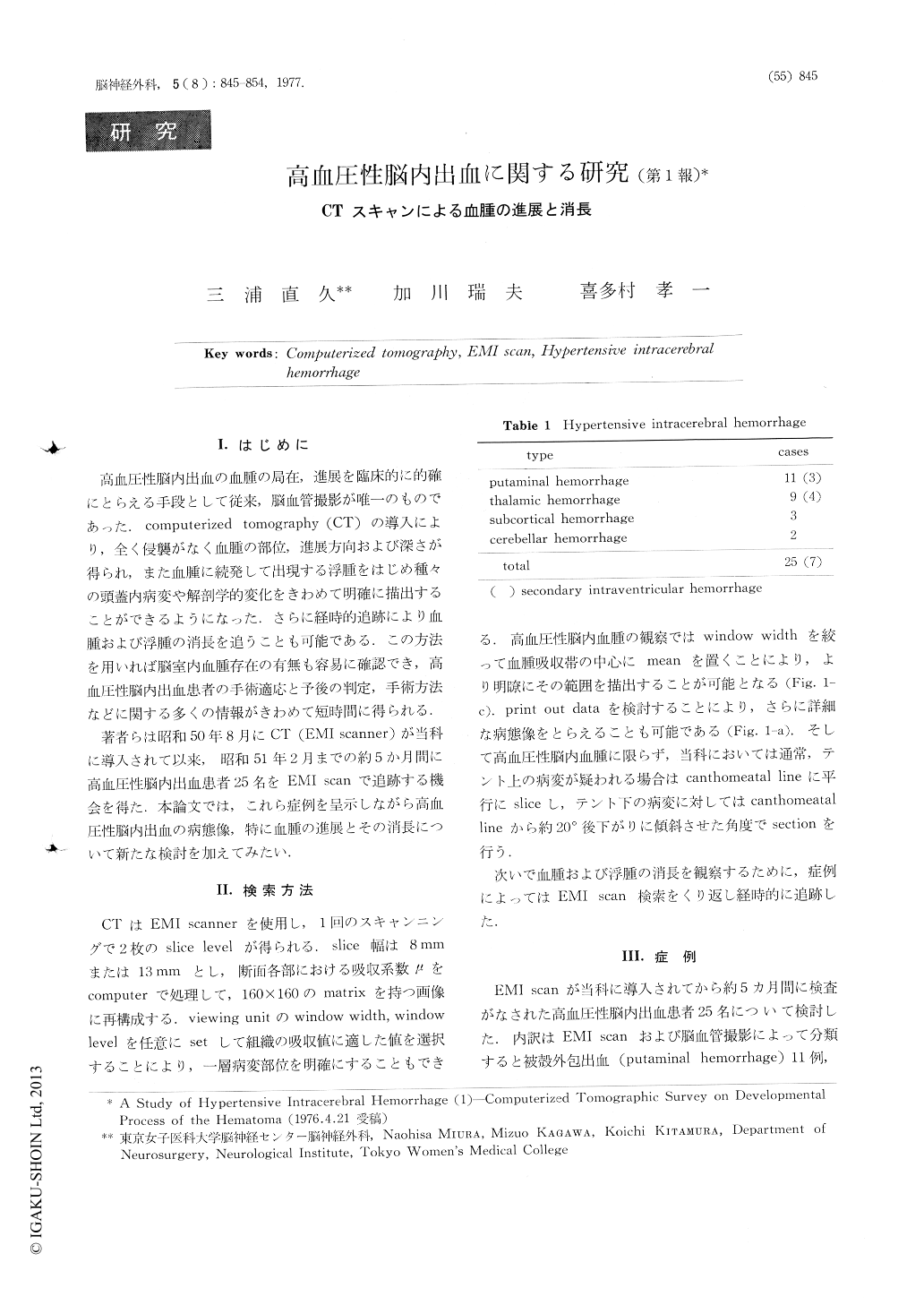Japanese
English
- 有料閲覧
- Abstract 文献概要
- 1ページ目 Look Inside
Ⅰ.はじめに
高血圧性脳内出血の血腫の局在,進展を臨床的に的確にとらえる手段として従来,脳血管撮影が唯一のものであった.computerized tomography(CT)の導入により,全く侵襲がなく血腫の部位,進展方向および深さが得られ,また血腫に続発して出現する浮腫をはじめ種々の頭蓋内病変や解剖学的変化をきわめて明確に描出することができるようになった.さらに経時的追跡により血腫および浮腫の消長を追うことも可能である.この方法を用いれば脳室内血腫存在の有無も容易に確認でき,高血圧性脳内出血患者の手術適応と予後の判定,手術方法などに関する多くの情報がきわめて短時間に得られる.
著者らは昭和50年8月にCT(EMI scanner)が当科に導入されて以来,昭和51年2月までの約5か月間に高血圧性脳内出血患者25名をEMI scanで追跡する機会を得た.本論文では,これら症例を呈示しながら高血圧性脳内出血の病態像,特に血腫の進展とその消長について新たな検討を加えてみたい.
CT is the most usefull and atraumatie technique to show reliably the definit localization and extent of the hypertensive intracerebral hemorrhage.
With CT it is also possible to represent the cerebral edema in the production of the mass effect associated with the intracerebral hematoma.
Since EMI scanner started to work on August '75, during 5 months, we have experienced 25 patients with hypertensive intracerebral and intracerebellar hemorrhage.

Copyright © 1977, Igaku-Shoin Ltd. All rights reserved.


